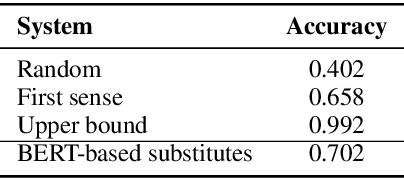How Well Do Large Language Models Disambiguate Swedish Words?
Paper and Code
Oct 30, 2024



We evaluate a battery of recent large language models on two benchmarks for word sense disambiguation in Swedish. At present, all current models are less accurate than the best supervised disambiguators in cases where a training set is available, but most models outperform graph-based unsupervised systems. Different prompting approaches are compared, with a focus on how to express the set of possible senses in a given context. The best accuracies are achieved when human-written definitions of the senses are included in the prompts.
* SLTC 2024 extended abstract
 Add to Chrome
Add to Chrome Add to Firefox
Add to Firefox Add to Edge
Add to Edge